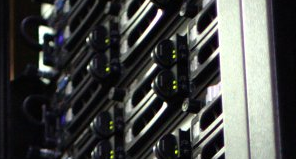If you experience a slow SSH connection to a Solaris 10 host while after connection everything works fine, then read on !
Continue reading SSH slow to connect to a Solaris 10 host
Category: Systems
All systems related posts
Ubuntu 8.04 + IBM T40 = No sound
If you upgraded your Ubuntu on an IBM T40 Laptop only to find out that there is no sound anymore, you’re not alone in this 😉
Follow the bug report for more information !
Edit 2008-05-11 : As of today I don’t have this problem anymore … update your machine if you haven’t yet !
Edit 2008-06-22 : Sound vanished again … I really need to look into this before this drives me crazy !!
Sound seems to come back and vanish unpredictably reboot after reboot …
OpenBSD : Release 4.3 is out
The twice-a-year release of OpenBSD is out today (More details on Undeadly). You can buy the CD set or get it by FTP (in this case consider donating to the project as CD sales are the main source of income to the project).
Enjoy.
CFEngine : Checking for processes
 CFEngine can do wonders to keep a cluster in shape, but it can be very useful for a single server as well. Here is a configuration sample to monitor a few common services and restart them should they fail.
CFEngine can do wonders to keep a cluster in shape, but it can be very useful for a single server as well. Here is a configuration sample to monitor a few common services and restart them should they fail.
Unix : shell tips
I ran into this into the following article, “Learn 10 good UNIX usage habits“. This article is mainly common sense, but there are interesting points, such as :
- avoid piping when you can, in order to save performance (the classical construct grep | wc to count the lines is useless as most versions of grep can count with grep -c)
- use awk to “grep” on a specific field of a line with “… | awk ‘$1 == “XXX”‘ which is cool and I never use
- the find | xargs construct (I’d add “find -print0 | xargs -0”, useful if your find brings back filenames with a space inside …)
All in all it is worth a reading, if only to refresh your memory.
dsh : a distributed shell
 A common problem when you deal with a pool of servers (clusters or server farms, you name it) is to execute the same command line on each server. It is usual to solve this with a “for” construct such as :
A common problem when you deal with a pool of servers (clusters or server farms, you name it) is to execute the same command line on each server. It is usual to solve this with a “for” construct such as :
for i in server1 server2 ; do ssh $i "uname -a"; done
But this is basically re-inventing the wheel everytime. Here comes Distributed Shell (DSH).
Continue reading dsh : a distributed shell
Linux : Clusters, Vitualization, High Availability, Load balancing
I’m back from a 3-day-training about clusters with Linux which was pretty exciting, and here are the main points which were covered :
- Vitualization with Xen
- Sharing data with GFS / GNBD
- Clusters with RedHat Cluster Suite
- Load Balancing with Linux Virtual Server (LVS)
Continue reading Linux : Clusters, Vitualization, High Availability, Load balancing
Linux : Using loop devices (eg : mounting an ISO file)
If you downloaded an ISO file and you want to mount it into your filesystem, you can proceed as follows :
spaghetti% sudo losetup /dev/loop0 cdrom.iso
spaghetti% sudo mount /dev/loop0 /mnt
spaghetti% ls /mnt
Autorun.inf setup.exe setup.ico
spaghetti%
[...]
spaghetti% sudo umount /mnt
spaghetti% sudo losetup -d /dev/loop0
This will use the feature known as “loop devices”, which lets you use a file as a device, and subsequently mount it as it would be one.
You can of course mount an ISO using loop devices, but there is more to it. You could for example mount a ciphered file containing an EXT2 filesystem.
Check out the man page for more details.
Linux + GSM : How to access your cell phone innards with Linux
This article explores your options to access your GSM cell phone from a linux system, and manipulate SMS and phonebook entries.
Doesn’t provide hints about how to unlock a GSM cell phone though 😉
Continue reading Linux + GSM : How to access your cell phone innards with Linux
Linux : Taking control of Virtual Terminals (VT) from command line
When you use Linux in text mode (as opposed to with an X server), you readily have access to multiple Virtual Terminals (aka VT for short) by hitting one of your <Alt-Fn> keys (if you are running a X server, you’ll need to hit <Ctrl-Alt-Fn> simultaneously).
This lets you access one of the VTs which are initialized at boot time, but won’t let you create new ones even if your kernel configuration would allow more VTs. Furthermore, what if you want to deal with VTs from a script ?
This post covers the 3 commands which will let you control your VTs from the command line or from a script.
Continue reading Linux : Taking control of Virtual Terminals (VT) from command line